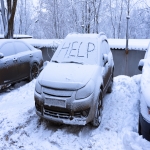You can catch more than a cold this time of year. Weather related injuries are often overlooked by people who work or enjoy the outdoors, but they can cause pretty significant injuries, or even fatal circumstances. These injuries can be the result of many different types of exposure to weather, so let us take a look at some common cold weather-related injuries.

Trench foot:
This does not require a freezing temperature to occur. Affected feet may become numb and turn red or blue as a result of poor blood supply. In more severe cases, you might even notice a decaying smell as the tissue starts to become necrotic (tissue death). Swelling, blisters, and open sores may lead to fungal infections, or what is called jungle rot.
Chilblains (perniosis):
This condition can anywhere on the body. It occurs when there is damage to capillary beds in the skin, causing redness, itching, inflammation, and even blisters at times. Most commonly caused by being exposed to cold conditions in the presence of humidity. If is often caused by being exposed to cold with the presence of humidity. People that suffer from Raynaud’s, lupus, or those who smoke are more susceptible for chilblains due to the affect these conditions have on your blood vessels.
Frostbite:

Sometimes known as cold burn, frost bite is a medical condition in which localized damage is caused to the skin and sometimes the underlying tissues by exposure to cold. Body parts that are farthest from the heart and that are exposed are more susceptible to frostbite, such as the nose and finger tips. Severity is classified in degrees ranging from 1 being least severe, often called frost nip, to fourth degree.
Hypothermia:
There is no questions that hypothermia is a medical emergency and required immediate attention. This occurs when the body loses heat faster that it can produce it. This leads to a fatally low body temperature, often resulting in the heart, nervous system, and other body systems to fail. This is most often the results of exposure to cold water of immersion in cold water.

What You Can Do to Help
- Be aware of warning signs: Shivering, sleepiness, confusion, changes in skin color, slurred speech.
- Stay indoors during extreme weather: If you must be out, make sure you are always in proximity to shelter or have emergency communication lines available.
- Increase fluid intake: Increase water, sports drinks, broth, or juices. Avoid caffeine and alcohol because they affect how your body reacts to cold.
- Wear appropriate gear: Hat, scarf, gloves, waterproof boots, clean dry socks.Wear multiple layers; the space between layers acts as an insulator.
- Avoid sitting and squatting for prolonged periods of time: Reduces unhealthy circulation in the body.
- Adjust outdoor activities: Take frequent breaks in a warm space, work during the warmest part of the day, properly stretch and ‘warm up’.
- Use the buddy system: Monitor the condition of your fellow co-workers and athletes for signs of symptoms of cold related illnesses or injuries and act fast.
- Keep spare clothes handy!
By: Riki Duncan, MA. Ed, ATC, LAT
Sources:
https://en.wikipedia.org/wiki/Chilblains
http://www.mayoclinic.org/diseases-conditions/frostbite/multimedia/frostnip/img-20007393
http://www.mayoclinic.org/diseases-conditions/hypothermia/basics/definition/con-20020453
http://health.mo.gov/living/healthcondiseases/hypothermia/illnesses.php

